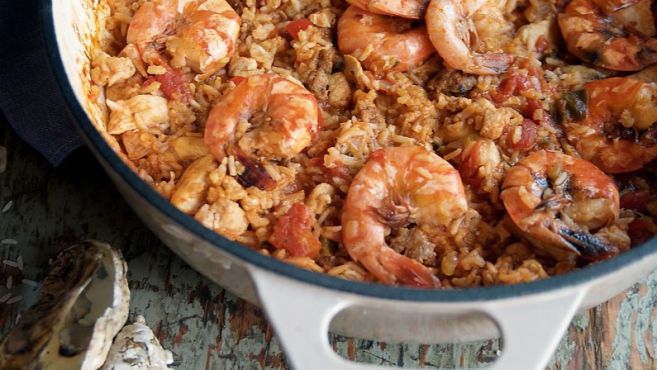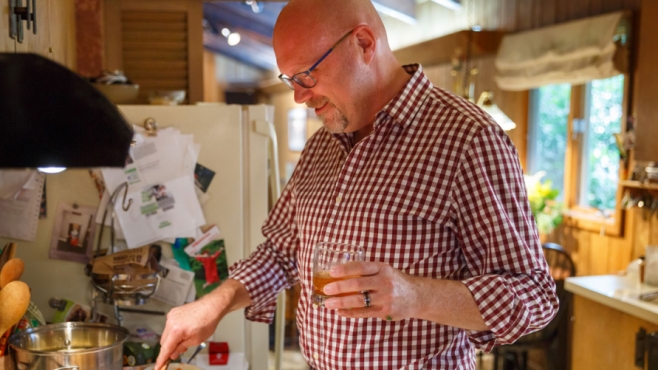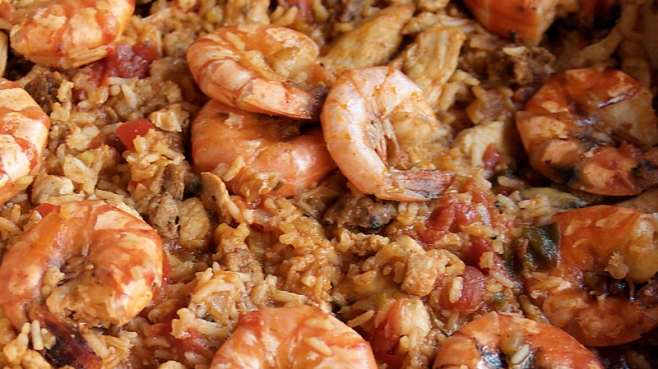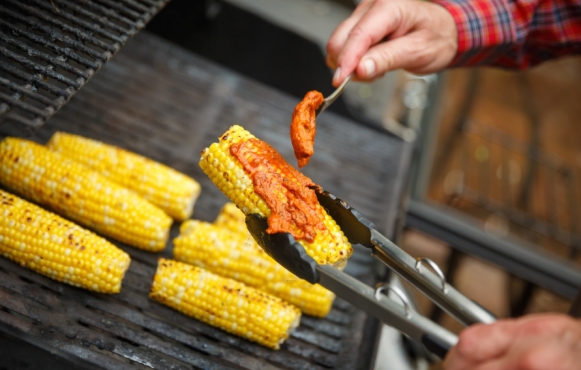Big Fun from the Bayou
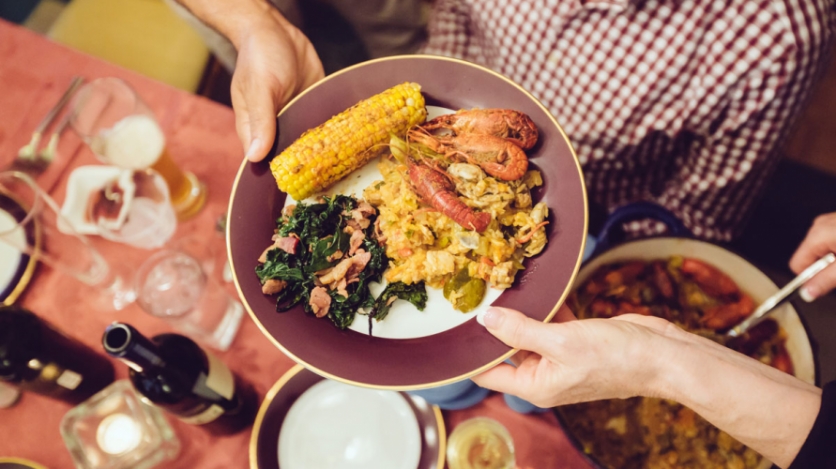
Fall in New Orleans feels like a big easy chair by the fire on a cool rainy day. For me, it is the home of comfort food. Perhaps this is why my friend Bill Murray and I were drawn to the intense, rich flavors of a Creole classic, jambalaya, when we began planning a dinner party for six.
Local ingredients dance to a Dixieland beat
For a home cook, it is thrilling to watch a pot of jambalaya take shape as the many ingredients are added. Although recipes vary by the region and by the cook, jambalaya is typically similar in composition to a Spanish paella (minus the saffron): a delicious combination of the Creole “trinity”—celery, peppers, onions—cooked up with andouille or smoked sausage, chicken and rice. Tomatoes are also welcome in some versions, and they certainly were in ours. Fresh shellfish—oysters, shrimp or crawfish—are jambalaya’s crowning glory.
Even though the inspiration for our menu came from 976 miles away, we sourced as many ingredients locally as possible. Between the South Bend Farmers Market, the Purple Porch Co-op, the gardens of friends and my own herbs, finding the vegetables was simple enough. Andouille sausage was no problem either—Hebron Farms (Vandalia, Michigan) makes the perfect spicy foundation for the dish. In place of ham, I used pork chops from Jake’s Country Meats (Cassopolis, Michigan). We used chicken breast from Sunshine Acres (Middlebury, Indiana). Locally sourcing oysters was admittedly impossible, but since I couldn’t imagine the dish without them, they had to make an appearance. Shrimp are now cultivated in Indiana, but I had my heart set on another kind of “Hoosier shrimp”—Indiana crawfish.
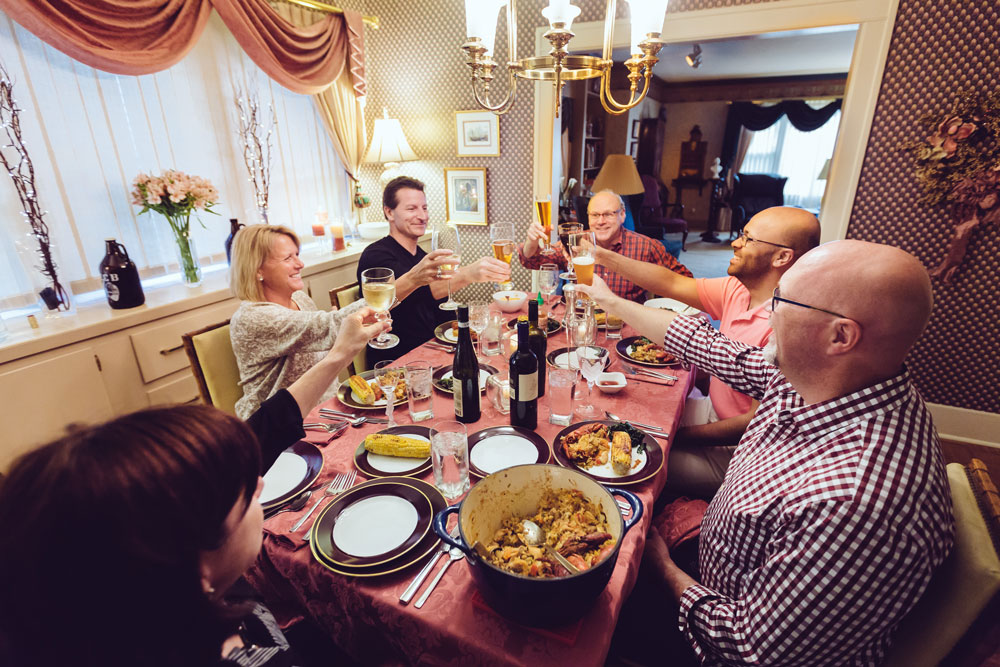
I remembered catching crawfish as a kid in local streams and recognizing their muddy burrowing along the banks. Unfortunately, while crawfish are plentiful in the Midwest, purchasing them to eat is another story—they are typically sold as bait. In the end, I bought some Louisiana crawfish from a local grocer. Much to my surprise, our dinner guests, Tammy and Steve, had experience in trapping crawfish in Louisiana. Tammy shared in great detail the process that just may be the inspiration for a future jambalaya using local crawfish.
No Creole-inspired meal would be complete without a Sazerac, the original New Orleans cocktail—a delicious concoction of whiskey, absinthe and Peychaud’s Bitters. My husband, David, is a connoisseur and believes that only in New Orleans can one get a properly crafted Sazerac. We were delighted when Bill proved him wrong. Perhaps it was the Journeyman Last Feather Rye Whiskey from Three Oaks, Michigan, that made the difference, but David and I agreed that it was the best Sazerac we’ve had this side of New Orleans (see our Michiana Sazerac recipe).
And no Michiana feast would be complete without local beer. Craft brews from Elkhart’s Iechyd Da Brewery and Mishawaka’s Evil Czech flowed freely as we raised our glasses in tribute to friends, fall, good local food and, of course, New Orleans herself.


